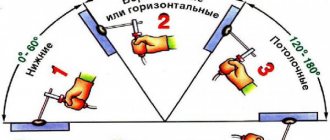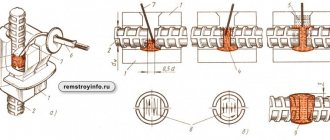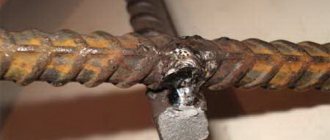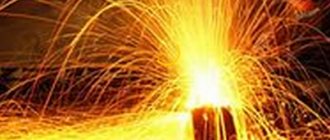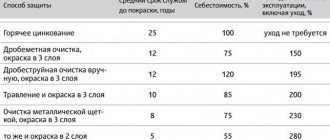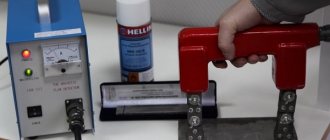Without deviating from GOST
First of all, the part will have to be cleaned of dirt. For this purpose, the current standard allows the following processing methods:
- Mechanical cleaning. During its implementation, various technological techniques can be used. The material is treated with a stream of abrasive material such as sand or shot, or simply by hand. Even a regular wire brush will do. You will have to make an effort and work hard, because if even minor contamination remains, all the work will go down the drain.
When mechanical cleaning has been completed, you should begin degreasing the part. In this sense, GOST provides the opportunity to choose from several options. Cleaning can be done:
- Steam, treating the part with vapors of organic solvents.
- Solvents, the simplest of which is water. To obtain better results, detergents are sometimes added to the water. But, if the material of the part allows, you can use solvents with higher chemical activity.
- Chemical reagents that react when introduced into a solution.
- Electrochemically, simultaneously affecting the part with both a chemical solution and electric current.
- Ultrasound, which enhances the cleaning effect of the solvents and chemicals used.
- Thermally. It is recommended in cases where the material of the product can withstand significant heat without damaging its structure.
The listed methods can be varied depending on the available technological capabilities. The main thing is to get a good result. Only after this should the part be treated with penetrant.
Then you can use one of several options for color flaw detection. When choosing them, everything depends on the specific capabilities and conditions for processing parts.
Useful tips
The color of the dye is not important. The main thing is that it is contrasting. The current GOST clearly normalizes the degree of illumination during flaw detection. It also allows the use of luminescent paints, for illumination of which it is recommended to use light sources with non-translucent reflectors. In some cases, to obtain a clearer picture, the part is heated.
It is clear that not all people have vision that allows them to see even a brightly colored line several microns thick. And therefore, when carrying out work, the standard allows the use of magnifying glasses and even microscopes. It should be added that with the help of color flaw detection you can not only check the quality of welds, but also easily detect the joints of tightly fitted parts. This can be important in cases where you have to disassemble devices of an unfamiliar design.
Necessary materials
The main material is an indicator liquid with a dye additive, which is called penetrant (from the English word to penetrate). To prepare a simple composition, mix kerosene, transformer oil, turpentine, and aniline dye. Proportions are standardized by GOST. The color of the solution should be clearly visible in normal lighting. It is usually made in a dark red shade. Powdered indicators are not widely used, since testing requires heating or mixing with special liquids.
Full color flaw detection is carried out using additional materials:
- Developers are necessary to create a background on which an indicator pattern is formed. They are made from aqueous solutions of chalk or kaolin, water-soluble white paint.
- Cleaners remove penetrant after testing. For cleaning it is possible to use detergents, PVA (surfactants), ethyl alcohol, 50% soda ash solution.
- The penetrant absorber washes off the developer from the surface being tested.
Security measures
Since quality control of welded joints using color flaw detection is carried out using flammable materials, personnel are provided with special clothing made of non-flammable fabric. There should be no source of open flame or sparks near the inspection site. In the premises for permanent work, signs with a smoking ban and fire safety rules are installed. Used cleaning material should be placed in a container made of non-flammable material.
Color flaw detection cannot detect internal defects. Therefore, when testing structures with high strength requirements, it is supplemented with magnetic, radiation or ultrasonic testing. After obtaining a complete picture of the state of the connection, a method for eliminating the detected flaws is chosen.
Technology
When carrying out color flaw detection of welds, they are guided by the requirements of GOST 18442-80. The test is performed at a temperature of 5 - 50°C in the following order:
- Remove dirt and slag from the surface of the welded joints and the area near the seam with a metal brush. Fine roughness is treated with fine-grained abrasive. The cleaned surface is degreased with gasoline or acetone. They are applied with a rag or sprayed. Small parts are completely lowered into a vessel with a degreaser. If the room is not equipped with exhaust ventilation, the procedure is performed with an aqueous solution of powdered synthetic compounds.
- After drying, apply 3-5 layers of penetrant with a brush or spray and leave for 5-30 minutes. The waiting time depends on the connection configuration and workpiece material (cast iron, stainless or carbon steel, aluminum, plastic). The layers are applied so that the lower layers do not have time to dry. Each new layer should be larger in area than the previous one. This will avoid mistakes, since a sharp transition or sagging may be mistaken for a crack.
- Excess penetrant is removed with a soft cloth moistened with cleaner. The surface is wiped until there are no traces of the indicator on it.
- The developer is applied in an even layer to the seam and the surface next to it. Wait for it to dry or dry it with a hairdryer.
- To detect flaws, the connection is inspected through a magnifying glass with a magnification of at least 5x. First after 3 - 5 minutes and again after half an hour.
Application area
The method of color flaw detection of welds has proven itself well in situations where, for some reason, it is impossible to use more modern inspection technologies. The scope of its application is wide.
- Shipbuilding. When installing hull cladding or partitions between compartments, it is important to ensure the tightness of the welds. After all, no one wants a ship launched from the slipway to immediately develop a leak.
- Laying pipelines for various purposes. It doesn’t matter what is pumped through the pipes - ordinary water or toxic chemicals, neutral or flammable gases. Under pressure, they will quickly find their way out. A water leak in a residential building will lead to flooding of apartments, and you will have to pay for their repairs. A domestic gas leak may well cause an explosion that will kill people.
- Production of various containers. Transport tanks or stationary tanks - they all must be sealed. After all, even ordinary water costs money. What will happen if an expensive chemical reagent leaks out through a crack invisible to the eye?
- Construction of houses. The frames of reinforced concrete structures are subject to high loads. In order for a building several dozen floors high to stand for its intended period, the quality of welding must be impeccable.
Wherever the use of complex inspection methods requiring special equipment is difficult, color flaw detection comes to the rescue. However, despite its simplicity, this technology still requires caution.
Various recipes
The chemical composition of the solution used to control the quality of welds varies. As one of the possible options, use a product made according to a simple recipe, which contains the following ingredients:
- Kerosene – 65%.
- Transformer oil – 30%.
- Turpentine – 5%.
By adding a small amount of organic dye, for example aniline, to the resulting mixture, mix everything thoroughly, after which you can begin to work.
Since it is not always possible to ensure precise control of time, and during prolonged treatment with water the coloring solution is washed out of the cracks, its excess can be removed in another way. For example, by carefully wiping the part with a cotton swab or a clean cloth. After this, they begin to apply the developing coating. Regular whitewash or water-based paint are quite suitable for this. When they dry, they will absorb the remaining solution with the dye, forming brightly colored nodes in the defect areas.
The coloring solution, made according to a slightly different recipe, has proven quite good.
- Kerosene – 80%.
- Transformer oil – 15%.
- Turpentine – 5%.
For each liter of the resulting composition, add 15–20 grams of fat orange or Sudan 3 as a dye. The part treated with this mixture is kept for 30–60 minutes, after which it is thoroughly washed with water, completely removing all traces of the dye solution from the surface. If you then apply whitewash to the surface of the product, the layer of which should be as thin as possible, then when it dries, stripes and spots will be clearly visible in places of defects.
Both compositions comply with GOST requirements and are recommended for use for non-destructive quality control of welds.
Capillary method - color flaw detection
The capillary inspection method (color flaw detection) is based on the capillary penetration of special indicator liquids into discontinuities in the material of the weld and heat-affected zone and registration of the resulting indicator traces visually or using a transducer. The method allows you to detect surface-facing and through defects, which can also be detected by visual inspection. Such control, however, requires a lot of time, especially when identifying poorly disclosed defects, when a thorough inspection of the surface is performed using magnifying means. The advantage of color flaw detection is speeding up the inspection process.
The main documents regulating the use of color flaw detection are GOST 18442 - 80, 28369 - 89 and 24522 - 80.
Depending on the methods of obtaining primary information, capillary methods are divided into: Color (chromatic); Luminance (achromatic); Luminescent; Luminescent color
The process of identifying discontinuities using the capillary method is divided into five stages:
- Preparing the object (cleaning);
- Filling cavities with indicator penetrant;
- Removing excess indicator penetrant;
- Application of developer;
- Control.
The control result is assessed visually and can be documented using photo and video equipment or transferred to adhesive film.
The sensitivity of color flaw detection is determined by the size of the smallest detectable defects. According to GOST 18842 - 80, the main parameter of a defect by which sensitivity is assessed is the width of its opening. Since the depth and length of a defect also have a significant impact on the possibility of its detection, these parameters are considered stable.
The sensitivity of the capillary (color) flaw detection method is determined by the ability to detect defects of a given size. The width of the defect opening is taken as a size parameter - the transverse size of the defect on the controlled surface. The lower sensitivity threshold is limited by the amount of penetrant sufficient to obtain a contrast image. In accordance with GOST 18442-80, five sensitivity classes are established: I (defect opening width - less than 1 micron); II (from 1 µm to 10 µm); III (from 10 µm to 100 µm); IV (from 100 to 500 microns) and technological class (opening width is not standardized). The sensitivity class is set by the developer of the control object.
The vast majority of defects detected during inspection by the capillary method (color flaw detection) can be detected during normal visual inspection, especially if the product is pre-etched and magnifying means are used. However, the advantage of capillary penetrating methods is that when they are used, the visual angle of the defect increases by 10...20 times (due to the fact that the width of the indications is greater than the defects), and the contrast - by 30...50%. Thanks to this, there is no need for a thorough inspection of the surface and the inspection time is greatly reduced.
